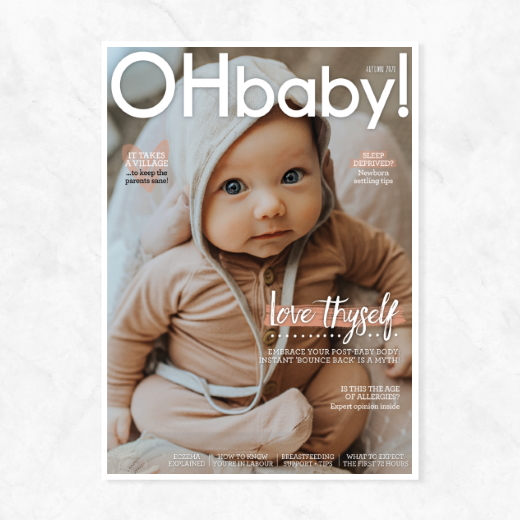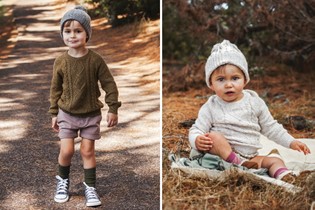Breastfeeding support for new mums

The experts at Breastfeeding NZ offer their top tips for your breastfeeding journey and remind us that, as with many aspects of parenting, good support is key.
Breastfeeding is wonderful because it creates a special bond between you and your baby. It also saves you time and money and may reduce the risk of some cancers and bone disease. However, it’s important to acknowledge that there are mothers who can’t breastfeed for biological reasons, and there are mothers who choose not to. All mothers should be supported to make their own choice on how to feed their baby.Breast milk is the perfect food for your baby. It’s all that your baby needs to eat and drink for about their first six months of life. Breast milk is tailor-made to help protect your little one against colds, tummy bugs, infections and allergies. Breastfeeding helps your baby feel safe and secure. A Māori concept for breastfeeding, ūkaipo, refers to not just the physical nurturing, but also the spiritual and emotional nurturing which will guide your little one’s growth into adulthood.
While breastfeeding is completely natural, we may not arrive at motherhood with innate breastfeeding expertise. Individual breastfeeding journeys can take all sorts of different paths. Breastfeeding is not always easy and not all mums will enjoy a smooth breastfeeding experience. Breastfeeding is a learning process, as is figuring out how to accommodate it into our busy days. Finding the right support is key to making your breastfeeding journey less challenging, so that you can enjoy the special connection with your baby.
WHERE DO I START?
It’s important to prepare for breastfeeding while still pregnant. Discuss your breastfeeding goals and fears with your midwife. Unpack potential challenges and work on a breastfeeding plan.
The first hour after delivery is a special bonding time that begins when your baby is placed skin-to-skin on your chest, right after he’s born. Your heartbeat will calm your baby and he will smell your breast milk. Skin-to-skin contact helps your colostrum (the first milk that is full of nutrients to protect baby) to flow more easily, and helps you breastfeed longer by building your milk supply and making your bond with your baby stronger.
IT'S ALL ABOUT THE LATCH
Some babies seem to intuitively know how to breastfeed and they make it look so easy. However, many mums remember those early latches as quite a different story!
The following tips for a great latch come from lactation experts, some of whom are mums:
✔ Make sure that you have good posture – sit up straight with your shoulders back and get comfortable. This will really help, especially in the beginning when it may seem like breastfeeds never end.
✔ Hold and cuddle baby, skin-to-skin. Hold baby upright between your breasts, support baby’s neck with one hand and support his bottom with the other.
✔ Give baby time to settle. It can be frustrating, but try to be patient and let him take the lead.
✔ Keep your baby close to you, with his chin in contact with your breast.
✔Once your baby has opened his mouth wide and has brought his tongue over his bottom gum, bring him on to your breast, aiming your nipple towards the top of his mouth. Your baby’s chin should be the first thing that touches your breast. He should take a large portion of your areola into his mouth, with his bottom lip and jaw covering more of the underside of the areola.
✔ As your baby feeds, your nipple will be against the roof of his mouth, cupped gently by his tongue underneath.
✔ If painful, un-latch and re-latch again. Be patient, especially when baby gets frustrated and upset.
✔ While breastfeeding may not seem very complicated, the emotions and the tiredness may make it harder than it is. If in doubt, don’t hesitate to call for help: your midwife, the hospital lactation consultant, a family member or a friend with good breastfeeding experience.
✔ Always remember: a good latch is essential to a happy breastfeeding journey.
|
TAKE YOUR POSITION 🤍 Laid-back breastfeeding is often the first one mums try. The classic Cradle Hold is the one we usually see in breastfeeding photos. The Rugby Ball Hold is helpful for mums with generous breasts and Side-lying Position is ideal for relaxed night feeds. 🤍 The Koala Hold (upright breastfeeding) makes breastfeeding comfortable for babies who suffer from reflux or ear infections. Breastfeeding with baby in a sling is convenient for multitasking, or when you’re out and about. 🤍 For twins, there is the Double Rugby Ball hold, where you can feed both babies at once while having your hands free. You will probably use different positions for different circumstances, places and times of the day.
Here’s an important tip: Before you and baby get comfortable for a feed, make sure that you have all that you need and want close by: water, snacks, phone, TV remote, book or magazine. It can be quite disappointing when your baby has finally latched well and the milk has started to flow, and your phone – two metres away – starts to ring... |
FOLLOW YOUR INSTINCTS
You’ll soon discover that when it comes to parenting, nearly everybody is an ‘expert’ with plenty of well-intended advice at the ready. Breastfeeding is no exception. It’s important that you trust yourself and your instincts. You know your body and your baby best, which makes you the real expert! However, breastfeeding shouldn’t be a ‘one mother’s mission’; family, friends and neighbours can step in and offer a hand when the washing isn’t done, the house needs a clean or you’re feeding a baby who’s going through a growth spurt. Create a network of support around you. It really will make a difference to your breastfeeding experience.
And for breastfeeding worries, there is support available:
✔ Your midwife or other Lead Maternity Carer (LMC), or a Tamariki/Well Child Service (such as Plunket) may be your first point of contact in the early days.
✔ Lactation consultants are worth their weight in gold, as one mum said. They’ll help you debunk breastfeeding myths and give you appropriate information and support.
✔ The BreastfeedingNZ Facebook page is a wealth of support with lots of valuable information and advice. Questions can be posted on the page or through private messaging, and answers provided by breastfeeding specialists and a community of other mums.
✔ La Leche League leaders are mothers who have successfully breastfed at least one baby and they volunteer their time to support other families in meeting their breastfeeding goals. You can find a local group at lalecheleague.org.nz/get-help/.
✔ Plunket Family Centres and Plunket’s 24/7 0800 933 922 parent helpline, which has a digital service to help mothers needing extra support with breastfeeding their babies.
BUSTING THE MYTHS
1. Breastfeeding is easy
Breastfeeding is always a new experience. Even if you’ve breastfed previously, breastfeeding a new baby may be quite different. Babies are born with the reflex to look for their mother’s breast and some mums know intuitively what to do and how to do it, but good information on positioning and practical support with latching will still go a long way. Breastfeeding can be very challenging for mothers and it’s unlikely you’ll get to the end of your breastfeeding journey without some kind of issue, be it a plugged duct, a cracked nipple or something else. It’s really good to know that there is plenty of information and support available out there.
2. Breastfeeding is painful
Breastfeeding is not supposed to be painful. In fact, breastfeeding actually stimulates the release of oxytocin from your brain, which allows your baby to get breast milk from your breasts and also fosters love, nurturing and a strong emotional bond between you and your baby. You may experience some discomfort in the early days, but with the right support for latching, and a good nipple cream, you should be able to avoid getting sore nipples.
3. Many mothers can’t produce enough milk
Almost all mothers produce enough milk for their babies. Milk is being produced at all times and collects in a mum’s breasts between feeds. The more milk in the breast, the slower the speed of milk production. If you’re worried about a short supply, you need to breastfeed, breastfeed and breastfeed again because the more milk you take out of the breast, the more milk you’ll produce. Milk supply is typically greater in the morning hours (so it’s a good time to pump if you need to store milk), and it gradually decreases as the day progresses, although its fat content tends to increase.
4. Breastfeeding can get expensive
You don’t actually need much to breastfeed comfortably. A top that’s easy to unbutton, a supportive breastfeeding bra, a good nipple cream and maybe a breastfeeding pillow is more than enough. And of course, plenty of healthy, nutritious and delicious snacks for you, amazing Mama!

JOIN THE VILLAGE
On the BreastfeedingNZ Facebook page you’ll find a supportive group of wonderful mothers like you, all at different stages in their breastfeeding journey. Here’s some advice for your early breastfeeding days, with love from the BFNZ sisterhood.
🤍 “Practise, practise and be patient. Love yourself, you are doing a great job. Don’t give up!”
🤍 “Take it one feed at a time, never quit on a bad day, and remember that you’re both learning how to breastfeed!”
🤍 “Stick with it ... it does get easier! The health benefits and its eventual easiness (no washing, sterilising, packing bottles and formula) are worth it!”
BreastfeedingNZ is a safe, nurturing community supported by a dedicated team of lactation consultants who provide assistance and information for mums, whether they’re breastfeeding or just have questions about it. facebook.com/breastfeedingnz.

AS FEATURED IN ISSUE 49 OF OHbaby! MAGAZINE. CHECK OUT OTHER ARTICLES IN THIS ISSUE BELOW


















